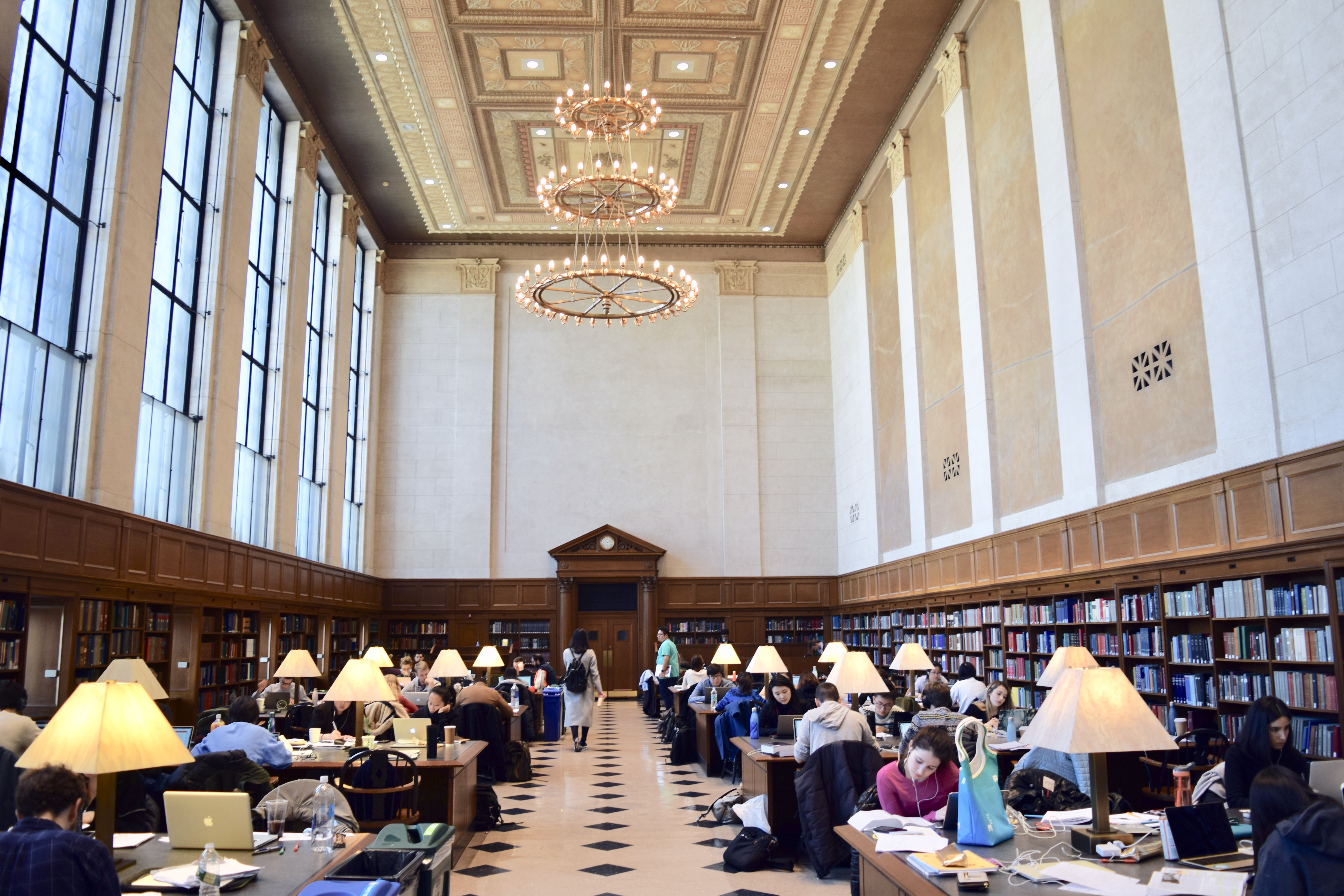Are you proud of our library?
Think about that question. When you walk in through the tired doors and onto the main level, what do you feel? Do you get the sense that you’re in the modern, scholarly centre of our university? Or do you feel like you’re in a 1970s airport lounge? The decades old stained carpets and cheap potted plants give you the impression of the latter.
A library is the most important building in a university. More than any residence, more than any administrative building, the library is the cultural and intellectual hub of an institution. It’s a repository of knowledge and a testament to our heritage. It’s a scholarly centre and a collaborative workspace. It’s a source of strength and culture to our university meant to inspire generations worth of students.
Simply put, the Vaughan Memorial Library does not do that.
Built between 1960-1965 to replace the Emmerson Memorial Library (now Emmerson Hall), the library has seen a lot. First it was a standalone building, with the top floors housing offices for the Faculty of Arts. Then the Beveridge Arts Centre was built next to it, leaving an awkward exposed portion in the middle. The space was filled in 1987 and the ramp leading to the glass box on the south end was demolished as the primary entrance, leaving the main reading room as a testament to bygone era.
The library has had a good life. But that life has come to an end.
Chronic lack of space has been a persistent issue. Not just students packing into cramped study rooms and the main level around exam time, but for collections and archives. The two levels below the entrance serve too many functions with too little space. The archives in particular have suffered as collections mount and conditions deteriorate. Wolfville summers are notorious for being too hot and the winters too cold. With climate change making both worse, the conditions of priceless pieces in our archives will deteriorate to crisis-level.
Students suffer more than anybody from a poor library. People are the centre of any library. Lack of space to study during exam time is one thing, but basic things like ventilation to keep us healthy and productive is another. The top two levels of the library in particular suffer a complete lack of ventilation, making it both unpleasant and unhealthy to work. A combination of chronic underfunding, reduced enrolment, a well-timed international financial crisis and skepticism about higher education has left Acadia in a tough spot. With our premier scholarly centre leaving prospective students, parents, and donors uninspired we stand little chance of overcoming our slump.
Let’s change that. Let’s inspire.
We must applaud the efforts underway by Acadia to address these challenges. Consultations about the state of the library have already begun and the issue has been raised at high-level Senate meetings. The redevelopment of Huggins Science Hall and the construction of the Huestis Innovation Pavilion and the Stevens Centre have had tremendous impact on the campus. Mount Allison has begun the process of reimagining their library, with ongoing town halls flushing out good ideas. Bishop’s University has just finished the reimagining of their library into a Learning Commons. The importance of this issue is understood but action has been incremental.
Here’s what we propose.
It starts with tearing down the Vaughan Memorial Library. This is not a new nor heretical idea. In fact, it was proposed almost twenty years ago by Robert A.M. Stern Architects and the multinational team designing the Campus Master Plan. The library then did not fit with the heritage of our university nor did it inspire. It was described twenty years ago as “unattractive, deteriorated, [and] shoddy”.
If that was twenty years ago, then we’re twenty years too late.
The proposal is to move the library to the centre of campus- Fountain Commons. This would put the library in a physical centre of prominence and keep it close to all academic buildings and residences. The design of Fountain Commons would also keep it in line with Acadia’s heritage and convey a proud symbol of our ability to persevere.
The rear of building would be extended back exactly fifty metres, just before Dennis House, to create the necessary facilities. This would involve digging into the side of the hill to ensure the new building was not intrusive to the rest of the university. The Great Hall of Fountain Commons would function as the Main Reading Room, creating the university experience we all deserve and benefitting generations to come.
Funding such a project would be monumental. The Emmerson Memorial Library cost $35,000 back in 1913, or $800,000 in 2018. The Vaughan Memorial Library cost approximately $1 million in 1960, or $8 million in 2018. A project like this would be much larger- perhaps $30 or $50 million.
This is completely possible.
The Campaign for Acadia has moved through its quiet phases for the past several years, going public weeks ago. With a goal of $75 million, $35 million has already been raised and $10 million pledged. Many of these donations come from Acadia alumni.
A project like a new library is one that major donors will want to contribute and something students desperately want. After all, who doesn’t want their name on a modern centre of learning?
Acadia has historic connections with both the Carnegie and Rockefeller foundations. It was Andrew Carnegie, the 20th century American steel magnate, who completely bankrolled the construction of Carnegie Science Hall in 1906. It was John D. Rockefeller Jr., whose personal net worth totalled more than $316 billion, who matched donations for the construction of a third College Hall after it burned down in 1920. His gift would total $5.3 million in 2018.
Acadia could leverage these historic connections to solicit donations and create a modern learning commons. Coupled with strong movements from the alumni and student communities, the necessary funds could be raised in two to three years, with another two dedicated to construction.
It’s high time that we opened our eyes and realized everything is not fine. Our library is a disgrace to our institution and to our reputation. Acadia has been a beacon of progress for 180 years: admitting students regardless of their religious affiliation, Depression-era ‘Bookmobiles’, and the Acadia Advantage are all testaments to our ability to create. A new, appropriately sized and designed facility will address the Library’s functional, spatial and technological inadequacies in a way that a renovated Vaughan Library cannot.
The library of our university should be a centrepiece, serving as a core for the campus community. It should be something we’re proud of, not something we settle for.
It took us twenty years to act. Our library is long overdue.





